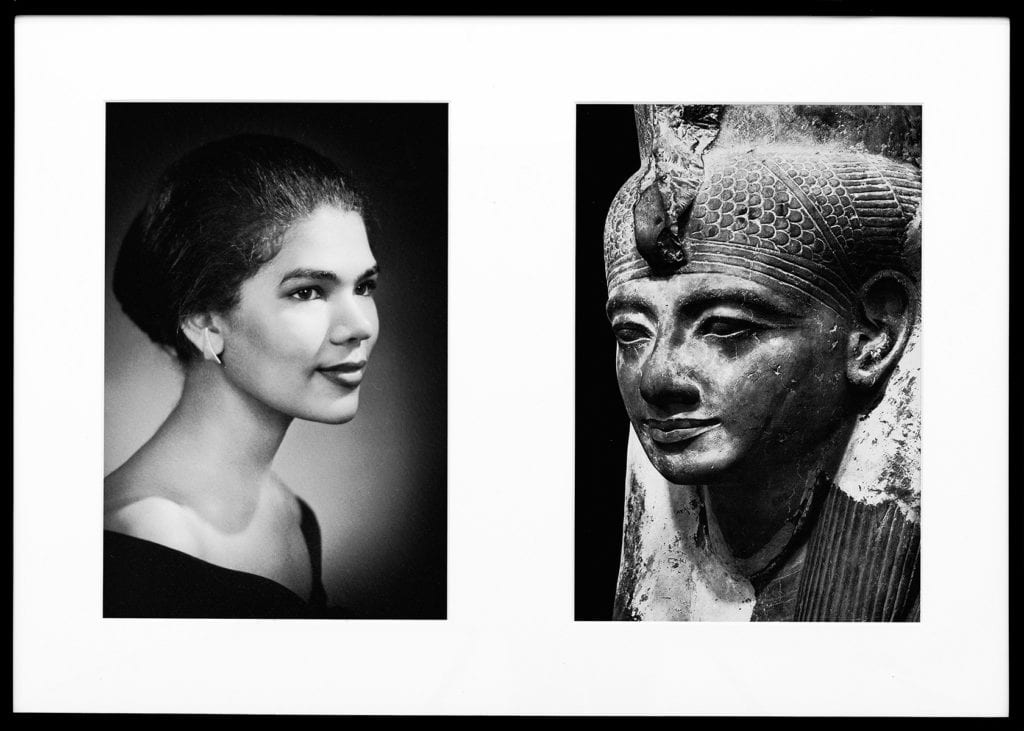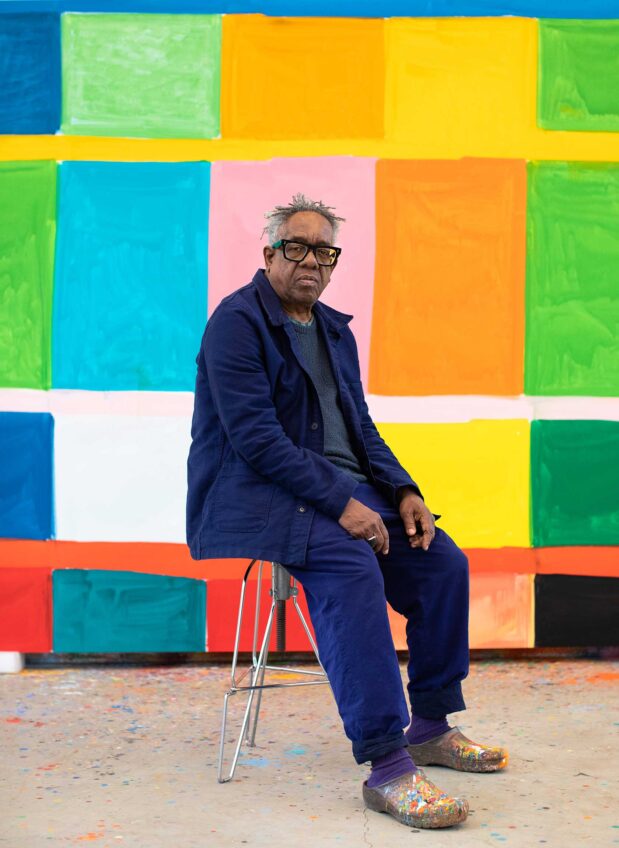Family lost and family gained
Boston native Lorraine O’Grady explores grief, family at the MFA

Boston-born artist Lorraine O’Grady has achieved an artistic feat few others can dream of: her family photos are hanging in the Museum of Fine Arts Boston. In “Lorraine O’Grady: Family Gained,” running through Dec. 2, the MFA displays “Miscegenated Family Album (1980/1994),” the first piece by O’Grady to enter the museum’s collection earlier this year. In the piece, 16 photographic diptychs explore the similarities between O’Grady’s family and Nefertiti’s.
In her 20s, O’Grady took a trip to Egypt and felt for the first time was surrounded by people who looked like herself. At the same time, she was grieving. “My sister had died, and we had a challenging relationship,” O’Grady says. “I was left bereft without the opportunity to resolve the relationship. I felt orphaned.” These conflicting feelings of losing her sister and finding a new “family” led to the piece Contemporary Art Curator Liz Munsell considers her best work.
The more she explored Egyptian history, the more comparisons O’Grady found. Nefertiti also had a sister, Mutnedjmet, who was always depicted far behind Nefertiti and her family in representations. “She was a pretty isolated character, and I felt that I could understand her relationship with Nefertiti because of my relationship with my sister.”

“Sisters III” from Lorraine O’Grady’s “Miscegenated Family Album (1980/1994)” series. Photo: Courtesy Museum of Fine Arts Boston/Lorraine O’Grady
The artistic exploration began as a performance, but O’Grady felt that bringing her grief into something physical would give her, and her audience, more time to work through it. “The only way I could bring her back to life was through the making of this art,” says O’Grady.
Two diptychs stand facing each other in the installation — “Hero Worship,” which depicts O’Grady and her sister together at different ages, and “Sibling Rivalry,” which depicts Nefertiti and Mutnedjmet. These two images illustrate the complicated relationship between sisters, a relatable concept for many viewers.
Though the photos have an intimate, personal tie to O’Grady, they also speak to the lives of women. Familial relations were complicated when Nefertiti was born around 1370 B.C. and a pessimist might say the female experience hasn’t improved. “The subtext is that we can’t choose our family, but we can choose our sisters,” says O’Grady. And in this piece, her sister chooses Nefertiti. O’Grady is left with Mutnedjmet to work through the feelings she can never express to her sister.
“Lorraine O’Grady: Family Gained” takes a series of universal experiences — challenging familial relationships, the search for cultural belonging and the process of grieving — and distills them into a striking visual exhibition. These may be O’Grady’s family photos, but they feel like our own.







